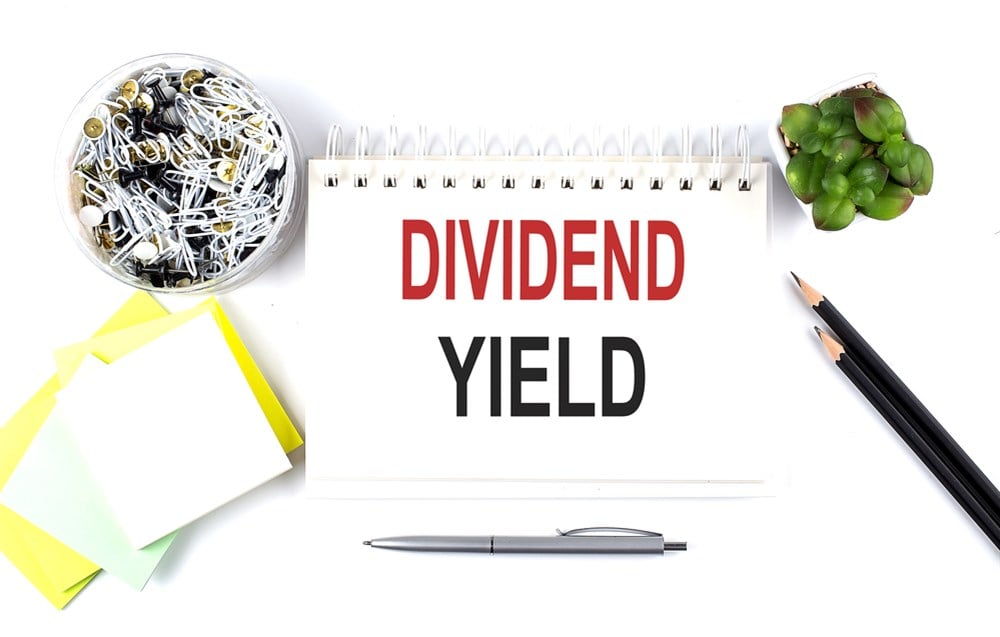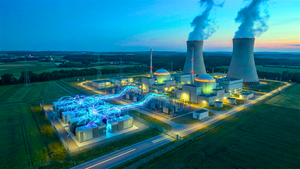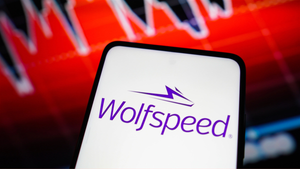
Dividend yield is frequently the first metric you will use when considering buying one or more dividend stocks.
A common strategy for investors interested in maximizing the benefits of dividend stocks is to buy the dividend stocks that return the highest yield.
In many cases, dividends with a high yield equate to financially stable companies with the ability and willingness to increase their dividend over time. These companies typically have strong balance sheets that hold up in both good and bad financial conditions. That stability means the companies are more likely to maintain or increase their dividend over time. Companies that have increased their dividends the most are known as Dividend Aristocrats or Dividend Kings.
However, there are exceptions to this theory, which is why it’s important to understand the factors that go into a dividend yield. This article will review the significance of a stock’s dividend yield for investors.
What is Dividend Yield?
A dividend yield is an expression of a company’s dividend expressed as a percentage of its stock price. The formula for calculating dividend yield is:
Dividend yield = Current annual dividend (per share)/Current stock price
Let’s look at two examples:
Verizon Communications Inc. (NYSE: VZ) pays an annual dividend of $2.61 per share. If Verizon’s stock price is $35.48 on the day it declares its dividend (the declaration date) you could calculate the dividend yield would as follows:
2.61/35.48 = 0.07356 or 7.36%
Procter & Gamble Co. (NYSE: PG) pays an annual dividend of $3.76. The PG stock share price on the declaration date is $145.06. The dividend yield is:
3.76/145.06 = 0.0259 or 2.59%
Now, let's look at what that would mean if you bought $5,000 of each company's stock.
If you bought $5,000 of VZ stock at $35.48 per share, you would own 140.9 shares. Since Verizon pays its dividend quarterly, you would receive $0.6525 per share (2.61/4). Your payout would be:
140.9 x 0.6525 = 91.94
That means you would receive $91.94 as a cash payout or to reinvest in VZ stock.
Now let's look at Procter & Gamble. If you bought $5,000 of PG stock at $145.06, you would own 34.4 shares of PG stock. Procter & Gamble also pays its dividend quarterly, so you would receive 0.94 per share (3.76/4) for every share you owned. Your payout would be:
34.4 x 0.94 = 32.34
That means you would receive $32.34 as a cash payout or to reinvest in PG stock.
Benefits of Dividend Yield
Income-oriented investors choose dividend stocks because they are counting on the income they receive from dividends to supplement their retirement savings. Therefore, stocks with a higher yield become attractive because, for the same amount of money invested, these stocks increase the payout you receive.
If you don't need the income for immediate expenses, a major benefit of owning dividend stocks is the benefit of compounding. You receive this benefit by reinvesting your dividends into a dividend reinvestment plan (DRIP). Because dividends pay out on a regular schedule, usually quarterly, you'll continue to buy shares regularly.
This, in turn, allows you to buy more or fractional shares, which increases the size of your next payout. Over time this is a proven way to build wealth over time.
What is a Good Dividend Yield?
What constitutes a good dividend yield will depend on many factors. However, many analysts suggest that a good dividend yield is a yield that is higher than a corresponding index.
For example, as of March 31, 2023, the average dividend yield of stocks included in the S&P 500 Index was 1.66%. However, historically, the index has had an average yield between 3% and 5%, so any stock with a dividend yield within that range is said to be a high-yielding dividend stock.
How to Evaluate Dividend Yield
Because dividend yield is based on the company’s current stock price, it will change daily and even several times throughout a trading session. This makes it an imperfect standalone metric for evaluating dividend stocks.
Therefore, investors need other ways to evaluate if a company’s dividend yield is a green light or a caution signal. Here are some factors to consider when evaluating a dividend yield.
Consider the Yield to Other Stocks in the Company’s Sector
When many investors think about dividend stocks, they may think about the blue-chip stocks their grandparents or parents owned. These companies, such as The Coca-Cola Company (NYSE: KO), grow consistently over time. Still, the real benefit to owning these stocks is the ability to collect a regular dividend over time. That’s one reason Warren Buffett likes KO stock.
However, Mr. Buffett also has an affinity for Apple Inc. (NASDAQ: AAPL). The tech giant is the definition of a growth stock consistently using its profits to branch into new areas. However, it also generates so much cash that it does manage to pay a small dividend.
Is the Dividend Sustainable?
Many dividend investors have suffered hefty losses after falling into a yield trap, which occurs when the company has an appealing dividend yield not supported with a strong balance sheet. That’s why investors must perform some basic fundamental analysis to understand how healthy a company is.
Are they growing earnings? Do they carry too much debt? Some companies can get away with borrowing money to pay a dividend. But over time, that’s not a sustainable strategy.
Look at the Company’s Dividend Payout Ratio
Next to dividend yield, a company’s dividend payout ratio (DPR) is probably the second most important metric to consider. The DPR measures how much profit a company uses to pay its dividend measured as a percentage. Any number above 60% is generally considered unsustainable, but that is sector and company-specific. For example, real estate investment trusts (REITs) and master limited partnerships (MLPs) must pay at least 90% of their profits through dividends.
Look For a History of Increasing Dividends
The best dividend stocks are companies with a proven history of increasing their dividends over time. The best of the best are considered dividend aristocrats and dividend kings. These companies have increased their dividends for at least 25 and 50 consecutive years, respectively. While past increases do not guarantee future increases, companies that commit dividend increases will tend to prioritize the dividend because they know that investors see it as a compelling reason to own the stock.
Dividend Yield isn’t Perfect, but it’s a Good Start
One of the many benefits of dividend investing is the annual dividend yield, typically paid out quarterly. For income-oriented investors, reliable and predictable regular income from dividends can make a difference in the quality of life in their retirement.
The dividend yield formula is: Dividend yield = Current annual dividend (per share)/Current stock price
So, a company that pays a total annual dividend of 80 cents per share with a stock price of $20 will have a dividend yield of 4%. Although there is no perfect answer to "What is considered an acceptable dividend yield?" most investors consider a 3%-4% annual dividend yield a good target, particularly if they plan to reinvest their dividends.
A limitation of using the dividend yield as a metric for investors is that it can misrepresent a company's financial health based on its stock price. For example, a company with increased revenue and earnings per share that falls short of analysts’ recommendations may see its stock price —and therefore its dividend yield — decline even though they are operating a healthy business. Conversely, there are times when a company may proactively announce a reduction in its dividend to take care of some pressing financial issues. However, if analysts perceive this action as one that can help the company's long-term health, they may increase its stock price.





